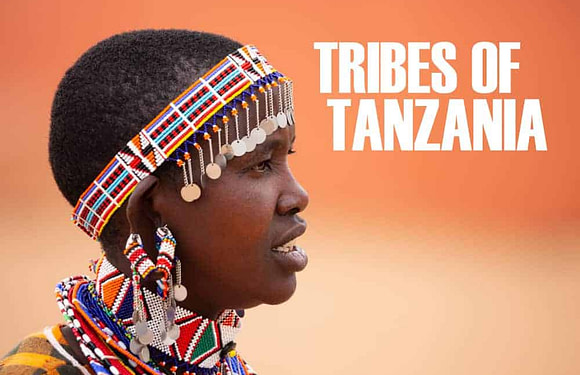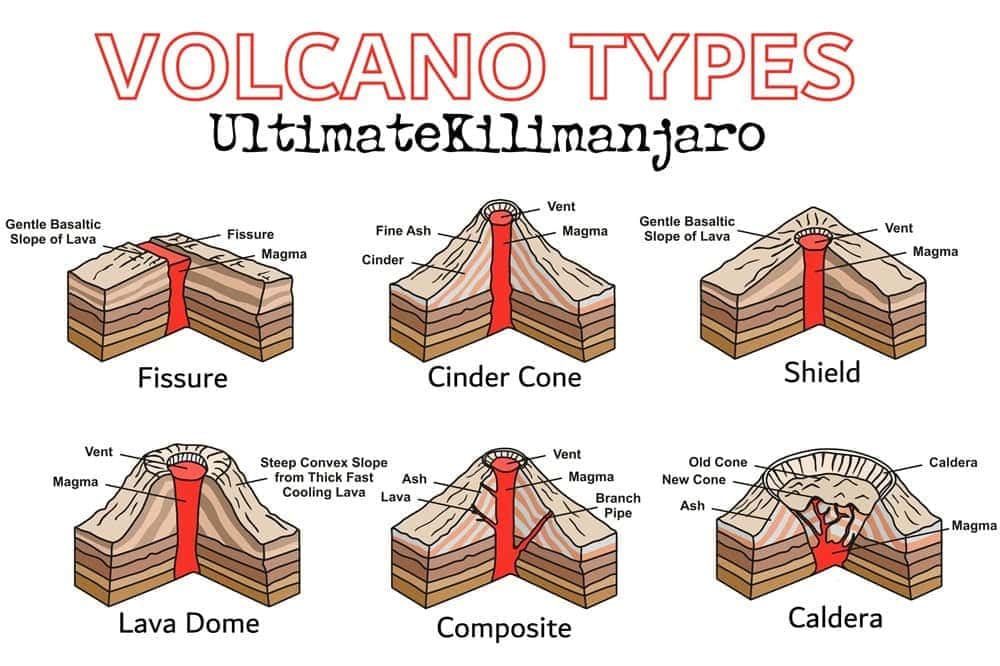
Volcanoes are among Earth’s most awe-inspiring and dynamic natural features. Geologists categorize volcanoes into six main types.
- Fissure Volcanoes
- Cinder Cone Volcanoes
- Shield Volcanoes
- Lava Done Volcanoes
- Composite Volcanoes (Stratovolcanoes)
- Caldera Volcanoes
Each is shaped by different geological forces and present distinct characteristics.
1. Fissure Volcanoes
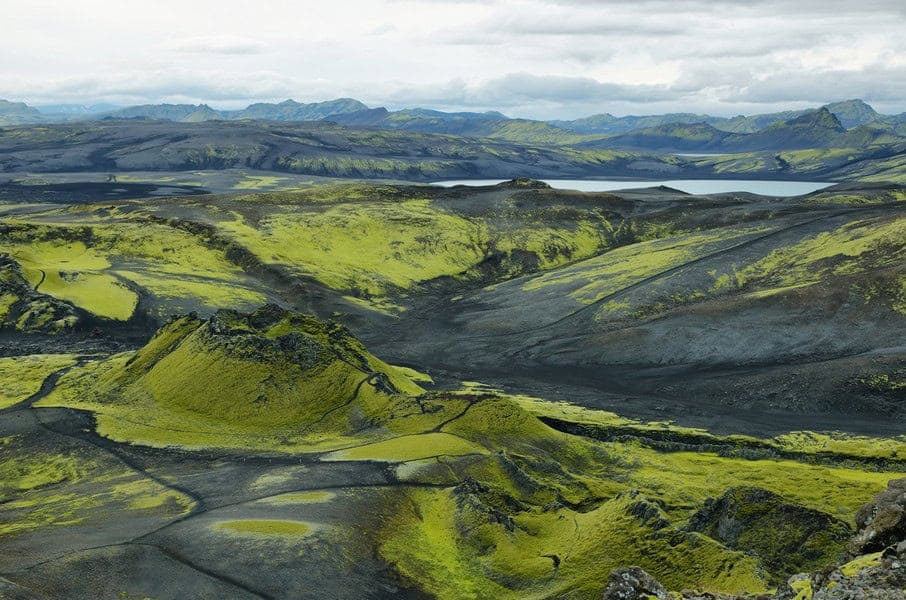


Fissure volcanoes are characterized by long, linear cracks or fissures in the earth’s surface from which lava erupts. These eruptions usually do not involve explosive activity but involve the effusion of large quantities of lava that flows over the surface.
- Laki or Lakagígar in Iceland is an example of a fissure eruption that released enormous amounts of lava and volcanic gases, having significant climatic and human impacts across the Northern Hemisphere.
- Also in Iceland is Eldgjá Canyon, known for being the largest volcanic canyon in the world.
- The Afar Region in Ethiopia features numerous fissure vents associated with the rifting process in the East African Rift system.
2. Cinder Cone Volcanoes
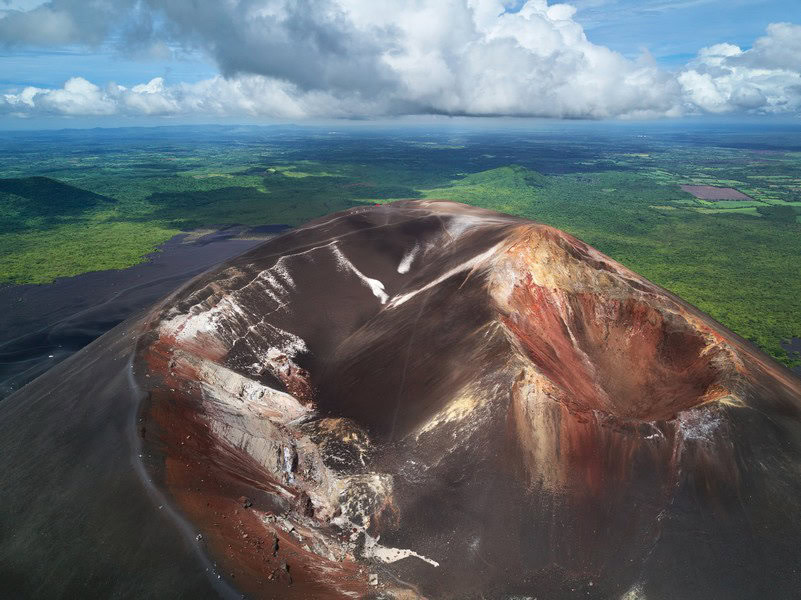
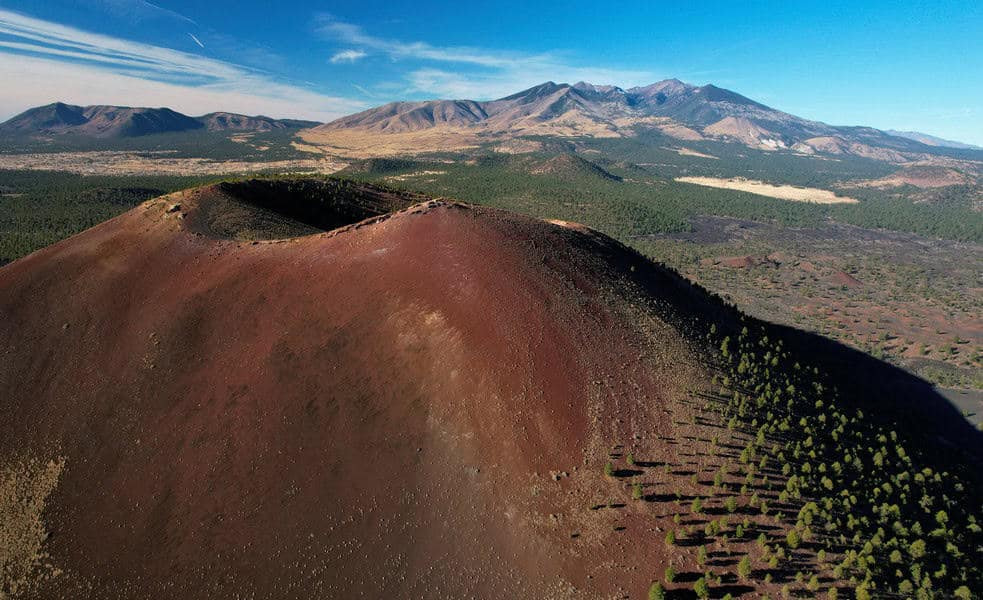
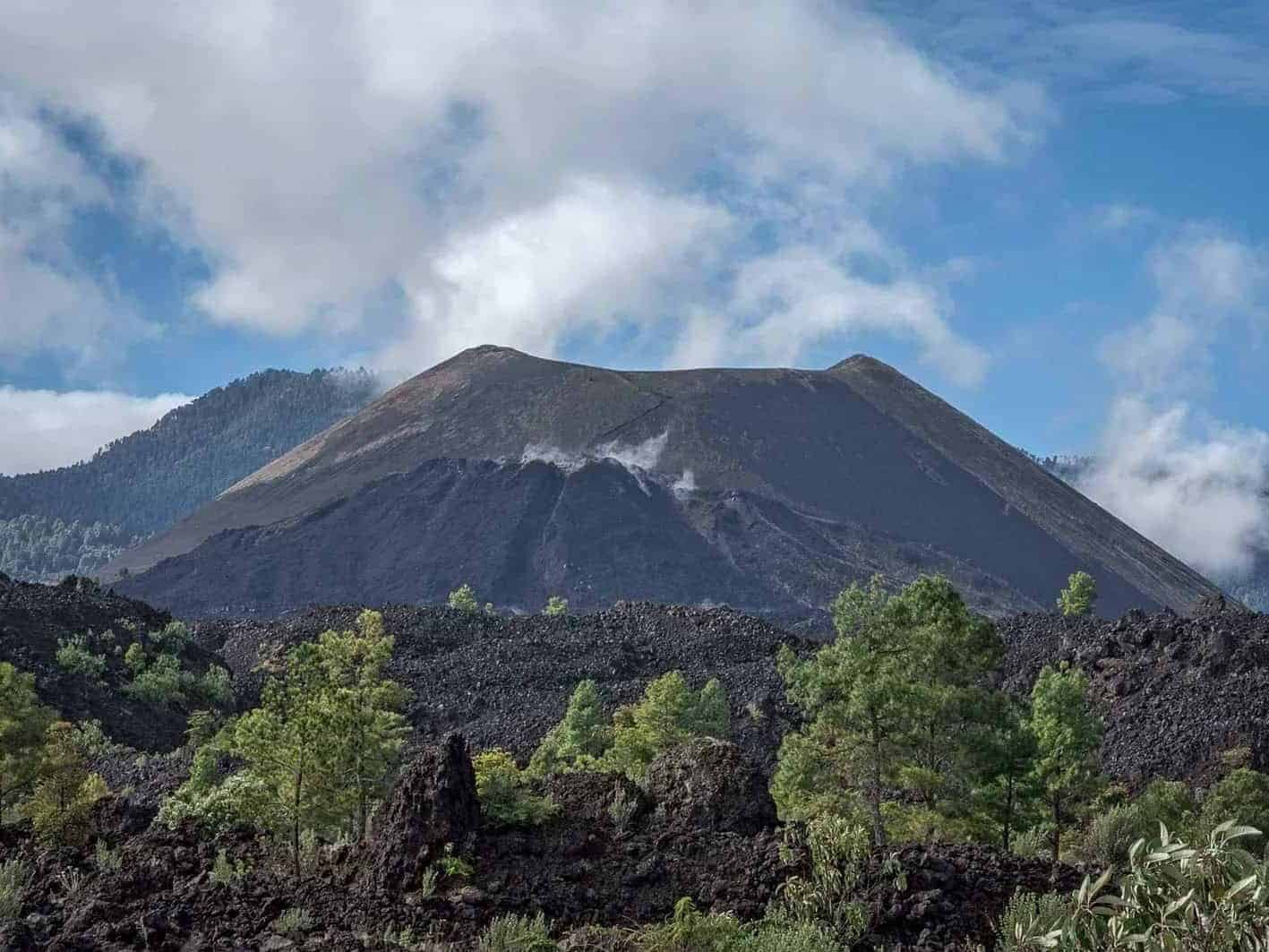
The smallest type of volcanoes, cinder cones, are formed from tephra, ash, and small lava bombs that accumulate around a single vent. With their steep, conical shapes, these volcanoes typically have short-lived but explosive eruptions.
- Cerro Negro is one of the youngest and one of the most active cinder cone volcanoes in Central America, having first appeared in 1850.
- Sunset Crater, located in Arizona, USA, is another well-documented example of a cinder cone volcano. It is the youngest in a string of volcanoes within the San Francisco volcanic field.
- Perhaps the most famous cinder cone, Parícutin in Mexico emerged in a farmer’s cornfield in 1943 and erupted continuously until 1952.
3. Shield Volcanoes
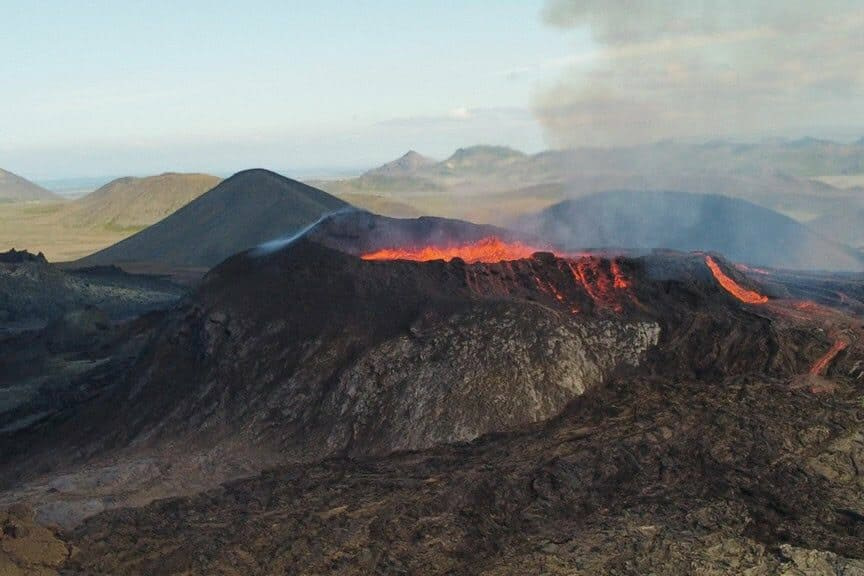
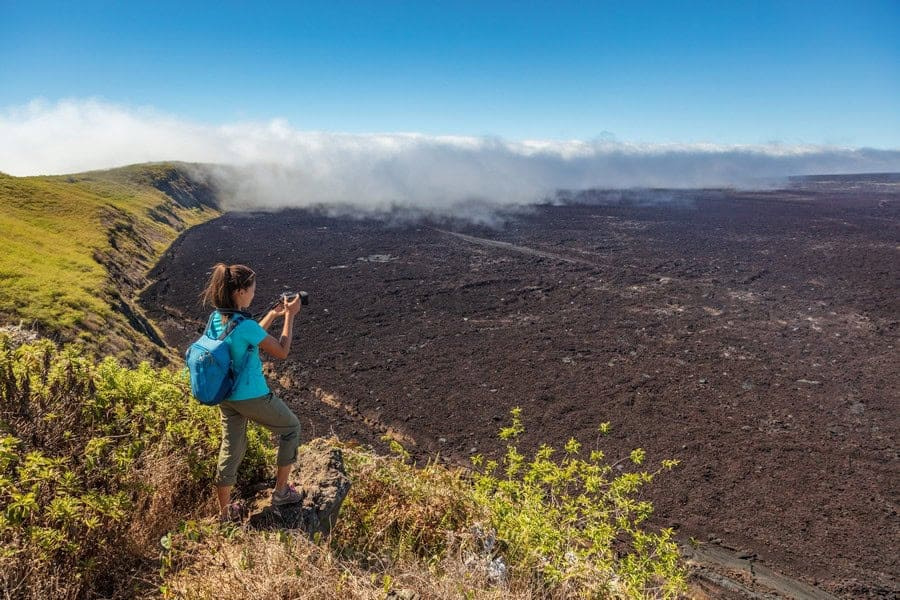

Shield volcanoes are distinguished by their broad, gently sloping profiles, resembling a warrior’s shield. These are primarily formed by the eruption of low-viscosity lava that flows over great distances. Eruptions are typically less explosive and consist of a steady flow of lava.
- Mauna Loa and Mauna Kea in Hawaii epitomize shield volcanoes, showcasing the classic features of extensive lava flows that build up over time.
- The Galápagos Islands are composed of several shield volcanoes, with Fernandina and Isabela being the most notable.
- Piton de la Fournaise is one of the world’s most active shield volcanoes, located on Réunion Island in the Indian Ocean.
4. Lava Domes
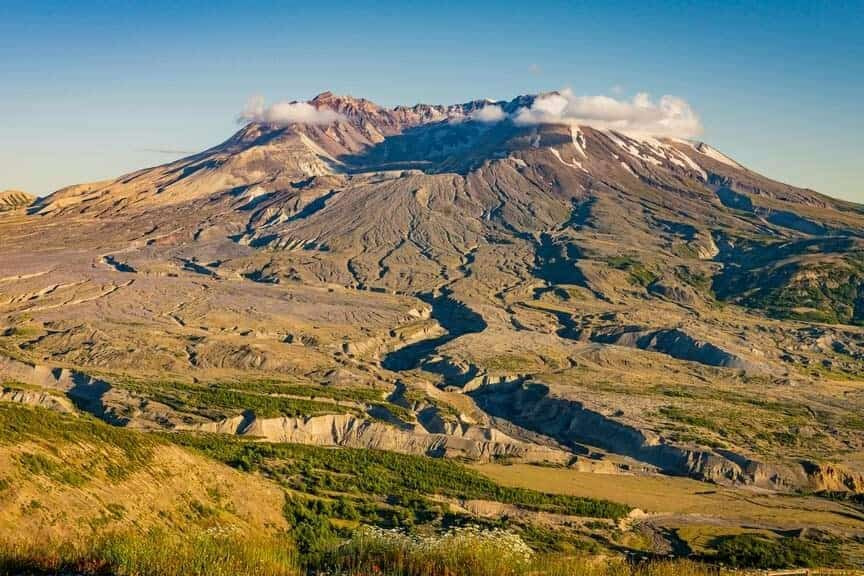

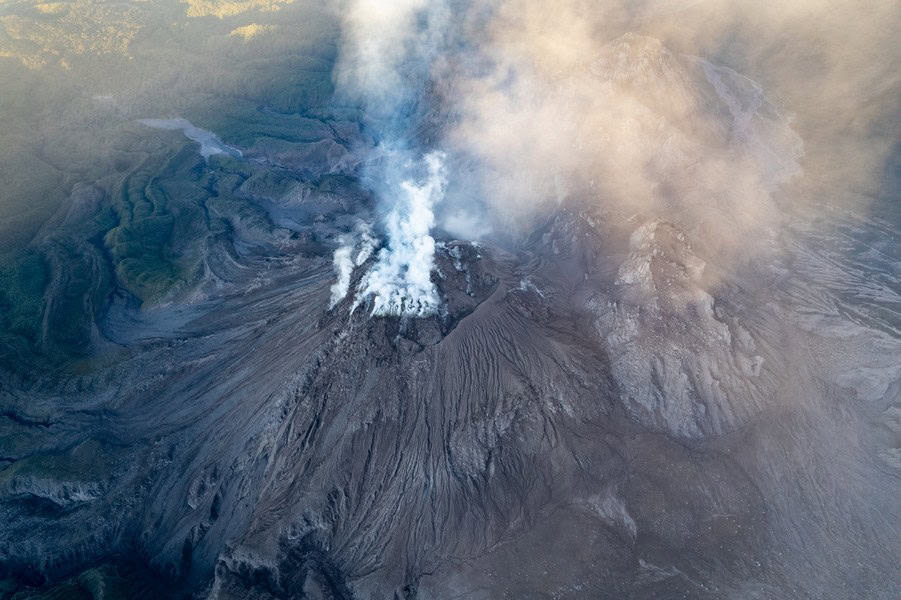
Lava domes are created by the slow extrusion of highly viscous lava from a volcano. These domes can grow over time and are often found within the craters of larger volcanoes. The lava is so thick that it piles up near the vent rather than flowing away.
- Mount St. Helens in Oregon has a well-known lava dome that has been actively forming since its 1980 eruption.
- The 1912 eruption of Novarupta in Alaska was one of the largest of the 20th century and resulted in the creation of a lava dome within the caldera at the eruption site.
- Santiaguito, located in Guatemala, is one of the most active lava domes in the world. It’s been growing since its formation in 1922.
5. Composite Volcanoes (Stratovolcanoes)
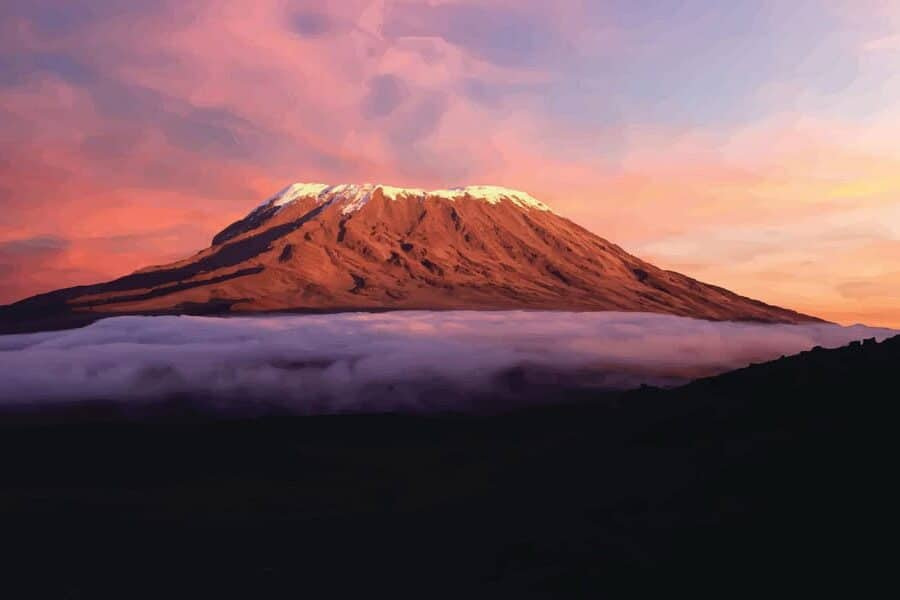
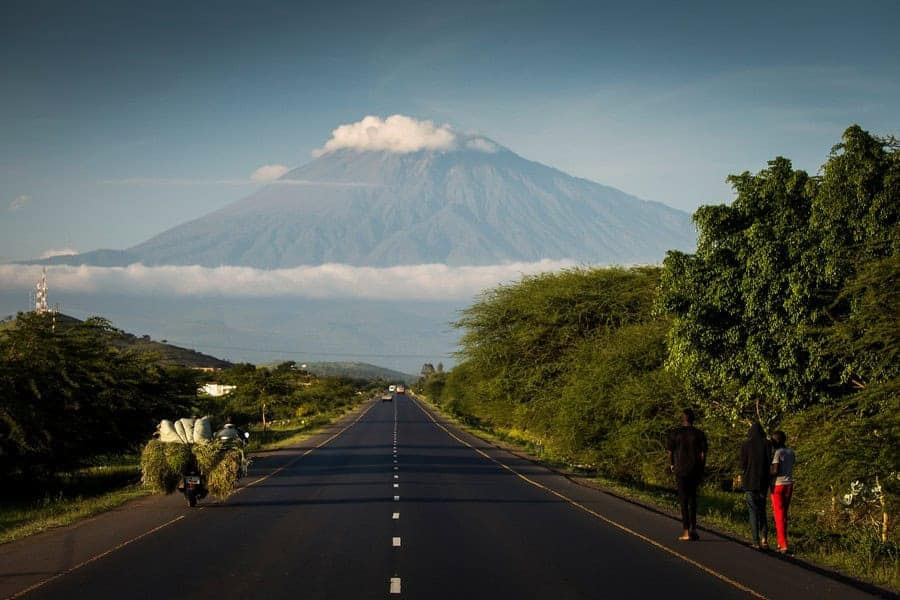
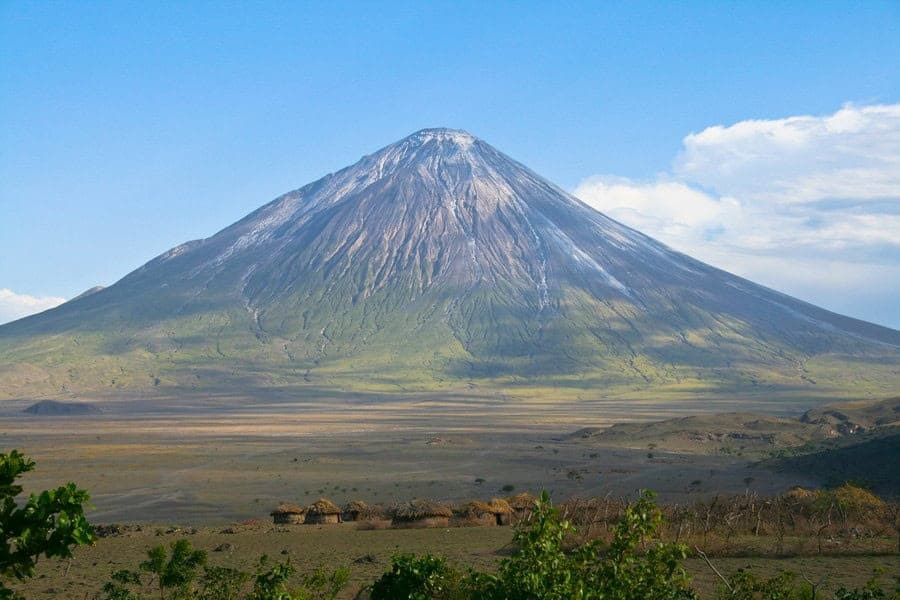
Composite volcanoes, also known as stratovolcanoes, are characterized by their steep, conical shapes and are composed of multiple layers of volcanic ash, lava, and tephra. These volcanoes are capable of highly explosive eruptions due to the build-up of pressure from gas-rich viscous magma.
- Mount Kilimanjaro, located in Tanzania, is a famous stratovolcano composed of three distinct volcanic cones: Kibo, Mawenzi, and Shira. Among these, Kibo is the highest and is dormant with the last major eruption occurring several hundred thousand years ago. Mawenzi and Shira are extinct.
- Mount Meru, located west of Mount Kilimanjaro, is another composite volcano. It is younger than Kilimanjaro and experienced its last significant eruption around 1910.
- Unique among global volcanoes, Ol Doinyo Lengai, also located in Tanzania, is the world’s only active natrocarbonatite volcano. This means its lava is rich in carbonatite, resulting in highly fluid lava that cools to a black or dark brown color, and turns white upon exposure to moisture.
- Mount Rainier in the USA and Mount Fuji in Japan are two other examples of stratovolcanoes, known for their picturesque profiles and violent historical eruptions.
6. Caldera Volcanoes
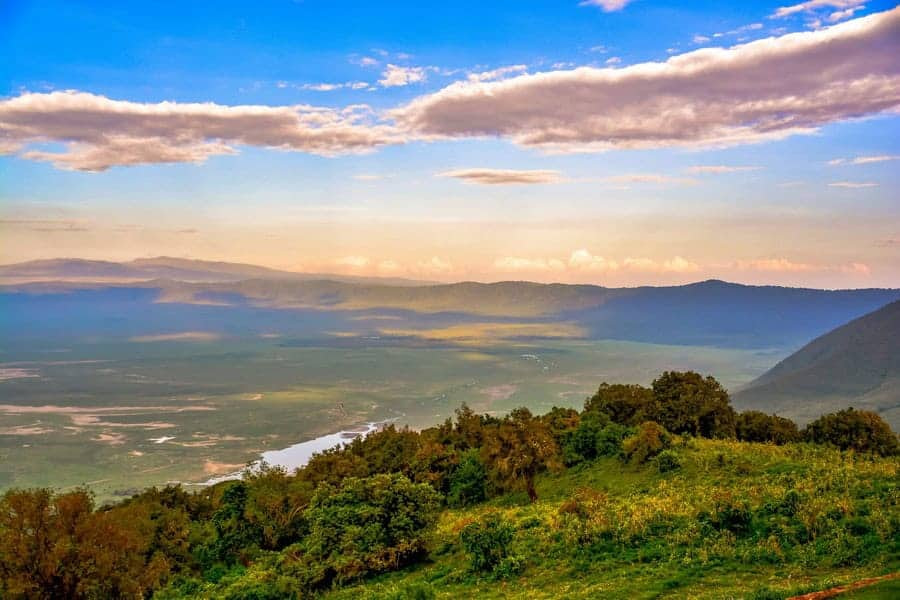


Caldera volcanoes are large, depression-like features that form when a volcano empties its magma chamber in a major eruption and the surface collapses into the emptied space. These catastrophic events create massive craters that can span several miles across.
- Ngorongoro Crater in Tanzania is the largest unbroken, unflooded caldera in the world. It was formed when a giant volcano exploded and collapsed on itself two to three million years ago. The crater is now a prominent natural reserve with a rich diversity of wildlife.
- Crater Lake, part of the Cascade Mountain Range in the USA, and the Santorini Caldera, located in the Greece, are other examples of caldera volcanoes.



















































